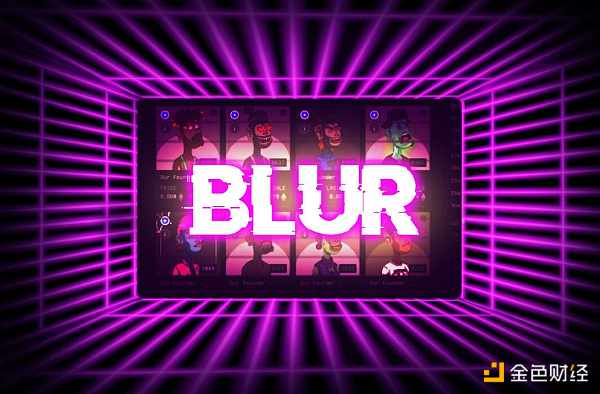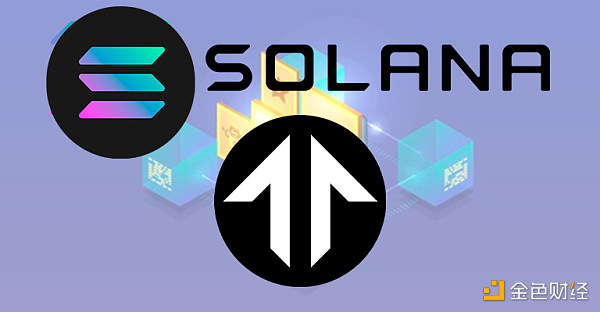In the fourth quarter of 2023, the NFT market saw a recovery, with significant growth in transaction volume on both Ethereum and Solana . As of January 16, 2024, Ethereum NFT transaction volume has more than tripled from their respective lows in 2023, while Solana NFT transaction volume has increased eightfold. As trading volumes recover, so do the floor prices of top NFT projects on Ethereum and Solana.
This article will focus on the resurgence of NFTs in the Solana and Ethereum ecosystems , providing insights into growth through 2024. At the same time, this article will also analyze some incentive-driven NFT markets, such as Blur and Tensor, which have been consolidating their significant share in existing NFT markets such as OpenSea.
Ethereum NFT Market< /p>
Ethereum NFT transaction volume reached its lowest point in September 2023, with only US$143 million. Monthly trading volume. Especially in the week from October 9 to October 16, 2023, Ethereum NFT trading volume plummeted to only $40 million. However, after October 9, 2023, a significant shift occurred, with weekly Ethereum NFT transaction volume jumping by 380% starting on November 27, 2023. This is mainly due to theBlur Season 2 airdrop on November 20, 2023.

Blur incentivizes users on its platform with the $BLUR token NFT bidding, listing and lending. It is worth noting that NFT traders are actively involved in trading in the weeks leading up to such airdrops, as evidenced by a similar trend during Blur’s first quarter airdrop on February 14, 2023. In addition, the results of the airdrop triggered a wealth effect, prompting NFT traders to reinvest the airdrop into NFT to maintain their points farming.
While Ethereum’s weekly NFT trading volume is up from its lowest point in 2023 increased by more than 300%, but weekly trading volume is still down 89% compared to the all-time high in March 2022. Ethereum’s NFT market still has a long road to recovery. Entering 2024, the next cycle of the Ethereum NFT ecosystem will likely be driven by advanced NFT trading platforms such as Blur and Blast incentivizing trading activity through airdrops.
OpenSea launched a professional trading platform in April 2023 to compete with Blur; However, OpenSea Pro has accounted for only 9% of Ethereum NFT transaction volume since September 2023. Blur’s dominance in professional NFT trading remains, largely due to its first-mover advantage and UX/UI design. For example, Blur’s utilization of the order book system allows NFT traders to assess the depth of a project’s price floor better than any other market. This, combined with Blur’s native NFT lending platform Blend, gives NFT traders the tools to build complex trading strategies.
Looking forward to 2024, Blur’s status will be due to the planned change in May 2024. The coming Season 3 airdrop was solidified. The campaign is expected to further incentivize NFT traders who have used Blur before, as 50% of the next airdrop will be distributed to existing $BLUR token holders. Blur's strategic advantages extend beyond its first-mover status to the comprehensive ecosystem it has developed.
Blur recently took the initiative to convert community activation fees in the governance plan. Use the generated funds to purchase NFTs for a 1% market fee, and use the money to repurchase and destroy BLUR tokens, doing so to reduce the supply of BLUR. Although this plan is still awaiting approval, it has proven that Blur has been working hard to improve the token economics of the platform and position itself as an important player in the NFT market.
The trading volume of NFTs has increased significantly recently, mainly because cryptocurrency users have returned to NFT markets such as Blur, but there are still many NFT traders who are waiting on the sidelines. It is worth noting that the number of weekly traders in OpenSea has decreased by 86% from the historical high in January 2022, which shows that there are still many retail users who have not returned to the market. While Blur is the most popular NFT marketplace in the cryptocurrency community, it primarily targets a more established and affluent group of NFT traders. In this context, observing OpenSea’s trading volume share is important to gauge the resumption of retail interest in NFTs.
Solana NFT Market
In September 2023, Solana’s NFT trading volume dropped to its lowest, at $30 million. From October 2 to 9, Solana had its worst week for NFT trading volume at just $4.4 million. But since October 9, Solana’s weekly NFT trading volume has grown more than eightfold. The significant increase in weekly trading volume of Solana NFT is mainly due to:
1. The Tensor NFT trading platform will be airdropped soon.
2. The increase in SOL tokens has caused all Solana NFTs to be repriced and attracted got more attention.

< p style="text-align: left;">
Tensor is Solana’s version of Blur, launched in 2022, where NFT traders can develop complex trading strategies. Tensor’s second season airdrop ends in August 2023, and the next airdrop is expected to occur in January 2024, which has also stimulated trading activity among Solana NFT collectors. In addition, the wealth effect of Solana holders is also an important reason for promoting the NFT ecosystem. With SOL up 615% for the full year of 2023, and other Solana applications being airdropped, activity is increasing across Solana’s various applications, including NFTs. Although Solana’s NFT ecosystem is recovering faster than Ethereum, it will not be the same as 2022 Compared with the historical high in May of this year, weekly NFT trading volume is still down by more than 60%. Like Ethereum, Solana’s NFT ecosystem is robust and capable of providing users with a cost-effective and user-friendly experience. Additionally, Solana’s NFT infrastructure is maturing rapidly, as wallets and other NFT applications have features such as displaying NFTs next to fungible tokens to better support the growth of the digital collectibles ecosystem. Overall, Solana’s next NFT market cycle is likely to be driven by trading activity on advanced trading platforms such as Tensor.
Market Concentration
Advanced trading platforms such as Blur and Tensor are developing rapidly and account for the majority of NFTs on their respective chains. Trading volume. Concentration in the NFT market is a mutually beneficial outcome for active NFT traders who require sufficient liquidity to enter and exit assets with high price fluctuations. Blur and Tensor encourage users to inject liquidity into their markets through airdrop rewards, which sellers can use to measure the market depth of a certain NFT. Before Blur and Tensor, traditional NFT marketplaces like OpenSea used a quoting system without rewards. Buyers lack the incentive to submit competitive offers, resulting in offers that are scattered and significantly lower than the true value of the NFT.

In 2023, Blur accounts for 67% of the total NFT transaction volume on Ethereum. Before the launch of Blur, OpenSea once accounted for more than 80% of NFT trading volume, but now accounts for only 29% of total Ethereum NFT trading volume.
In 2023, Magic Eden dominates the Solana NFT trading space, Accounting for 51% of the total transaction volume, the performance is very good. However, it is closely followed by Tensor, which holds 41% share.
Although Magic Eden is ahead of Tensor in 2023, there are also a few days of Tensor this year The trading volume exceeds that of Magic Eden, especially during the recovery period of the NFT market in October 2023. From October 1, 2023 to January 1, 2024, Tensor’s transaction volume soared, exceeding Magic Eden by 50%.
With advanced trading platform driven by airdrops and other incentives for Q3 Planning to prepare, Tensor is expected to surpass Magic Eden’s share of the NFT market in 2024.
The impact of Blur and Tensor on NFT market concentration shows that advanced trading platforms Looking for a clear market position. Although Blur and Tensor were platforms launched during a bear market, they managed to capture market share from well-known legacy markets such as OpenSea and Magic Eden.
Ethereum vs Solana< /p>
From May to September 2023, Solana’s NFT and Ethereum’s NFT dominate the market There was fierce competition. During this time, Solana’s NFT transaction volume accounted for less than 10% of the total transaction volume (including Ethereum and Solana’s NFT transaction volume). However, starting in November 2023, Solana's NFT began to grow significantly and quickly gained market share. By December 2023, Solana’s NFT weekly trading volume will account for at least 22% to 39% of the total trading volume.

2024, Solana’s NFT transaction Volume will continue to compete with Ethereum’s NFTs. Since December 1, 2023, more than $50.5 million has been bridged to Solana from other blockchains such as Avalanche, BNB Smart Chain, Arbitrum, and Ethereum. While new capital flowing into Solana may be due to the airdrops and yields provided by Solana’s decentralized finance applications, if incentives change, these applications may exit the ecosystem quickly after entering the ecosystem. However, we can expect that some new capital will flow into Solana’s NFT. Depending on how quickly Ethereum NFT recovers, and the amount of new capital flowing into Solana as of December 2023, we can expect Solana’s NFT trading volume to reach 30%-50% of total trading volume in 2024.
By observing the on-chain activity of wallets buying, selling, or minting NFTs throughout the day , we can clearly see that Ethereum’s NFT market lacks new users. In 2023, the number of active NFT users on Ethereum dropped by 73%, while the number of active NFT users on Solana increased by more than 200% during the same period. On December 19, 2023, the number of active NFT users in Solana exceeded the number of active NFT users in Ethereum. If we apply a 30-day moving average to calculate the number of active NFT users on Ethereum and Solana, we can see that Solana now has more daily active NFT users than Ethereum.
It should be noted that active NFT users refer to minting, A unique address to buy, sell or transfer NFTs. This unique address may be owned by a single person or entity, and since the cost of transacting on Solana is lower than on Ethereum, the number may be larger on Solana.
Conclusion
The upcoming NFT cycle will be driven by advanced NFT trading platforms, innovative airdrop incentives for NFT holders and broader Driven by the wealth effect brought about by the recovery of the crypto market. Advanced NFT trading platforms have already established themselves in the market, and as liquidity is integrated into these types of platforms, their market share will continue to be between 50%-60%.
In general, when Solana’s NFT ecosystem experienced its first repricing moment, if the price of ETH also rises significantly, one of the most noteworthy developments in 2024 will be the repricing of Ethereum NFTs.
 Coinlive
Coinlive 
 Coinlive
Coinlive  Coinlive
Coinlive  Coinlive
Coinlive  Coinlive
Coinlive  fx168news
fx168news CharlieXYZ
CharlieXYZ Bitcoinist
Bitcoinist Bitcoinist
Bitcoinist Bitcoinist
Bitcoinist Bitcoinist
Bitcoinist